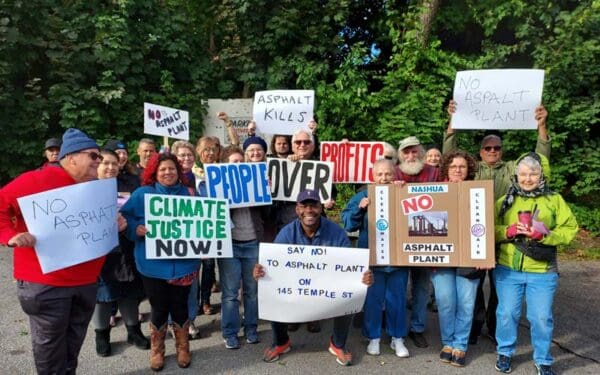
As we sprint towards our clean energy future, we'll need more electricity transmission to ensure we meet the growing demand for renewable energy. Photo: EcoPhotography.
Update: Unfortunately, National Grid has decided to end this project. CLF will continue to look for and watchdog future, regional transmission initiatives that can bolster clean energy.
In late October, the U.S. Department of Energy announced up to $1.3 billion in support for clean energy projects across the country. That money will fund three electricity transmission projects intended to boost clean energy across six states.
One of the projects receiving funding is proposed for here in New England. The Twin States Clean Energy Link would run from the Canadian border through Vermont and into New Hampshire to both send and receive clean energy.
It’s fair to say that past discussions around major new transmission lines in New England have been animated. As we look at this latest proposal, we want to make sure that the project provides jobs and lower energy costs widely, while directly compensating communities that feel the impact of it.
The proposal is still in its early stages, but here’s what we know so far about the Twin States project – and what it could mean for New England.
What Will the Twin States Clean Energy Link Do?
This proposed transmission line will supply our electricity grid with clean energy from Canada. Boosting the supply of clean energy in New England is critical to cutting the climate-damaging emissions caused by burning fossil fuels for electricity. The Twin States transmission line has the potential to provide enough renewable and clean power to replace some of the dirtiest, most expensive power plants that run when electricity demands peak – such as during the hottest and coldest days of the year.
Importantly, this transmission line also will allow New England to send energy to Canada. This means when we generate more clean energy than we need, like during times of low electricity demand, we can sell that surplus energy to Canada. This shared use of a single transmission line, and swapping excess power between countries, should help lower electricity prices for New Englanders and avoid the cost and impacts of additional power lines and power generators.
Why Does New England Need More Clean Energy Transmission?
To avert the worst impacts of climate change, we must electrify our lives, from the cars we drive to the appliances we use. This transition will naturally increase electricity demand – and we need to prepare our electricity grid to meet that demand with clean, renewable energy sources.
The Department also selected this project, in part, on the findings of a national study analyzing the country’s electricity (and specifically transmission) needs through 2040.
What to Look Out For
Construction on the Twin States Clean Energy Link is slated to begin around the end of 2026. In the meantime, we must look out for a few critical things to ensure this project provides jobs and lower energy costs widely, while directly compensating communities that feel the impact of it.
- This project must not hurt any communities in its construction path. Twin States Clean Energy Link requires some new construction. But the good news is the project will use existing rights of way (areas already designated for transmission construction) for any new construction required – and 75 miles of those new lines will be built underground. For the rest of the project, the developer will largely upgrade or replace existing transmission infrastructure. That will minimize environmental harm as well as impacts on the communities the transmission line will pass through.
- Impacted Indigenous nations should be partners in the project, so they are included in decision-making and guaranteed to benefit. Since the clean energy brought into New England will likely include hydropower, it inherently affects the First Nations in Québec.
The most important next step for the Twin States Clean Energy Link is to initiate an early and comprehensive process of input and information gathering from communities and landowners in the project’s route. Developers should also provide education about the proposed project to ensure transparent and two-way communication. Project developers must prioritize public participation, including all communities affected by the project in discussions and decision-making. CLF will be deeply engaged in permitting processes in New Hampshire and Vermont, and any federal permits. Our goal is to avoid and reduce development impacts and ensure that the project benefits New England’s communities.




